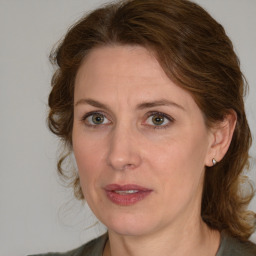This sample will let you know about:
- Discuss about the P2 Size and scope of organisations of business.
- What is the 3 types of business organisation .
- Discuss about the Internal and external analysis of organisations with SWOT Analysis.
INTRODUCTION
Business environment constitutes the surroundings of an organisation together with the intrinsic and extrinsic elements which place an impact over the operations of company. The elements which come under the business environment are customer, vendor, employees, demand, supply, laws, politics and many more (Toedt, 2014). It is important for a firm to constantly take into account such factors in a bid to make sure that there are no adversities for the company in future course of time.
The project is divided into two sections. The first section consists of an overview of various organisation types together with their size as well as scope. Further, it includes the different types of business structures along with the relation of functions to objective and mission of corporation. It is based on 3 organisations, namely, NHS, TESCO and Oxfam. The second section takes into account the influence of macro and micro factors over the decision making and objectives of corporation. It includes PESTLE and SWOT analysis. Also, the interrelation of strengths and weaknesses with macro environmental elements is covered in the assignment. This section is based on 2 companies, namely, Marks & Spencer and TESCO.
PART 1
P1 Public, private and voluntary sectors and legal structures
There are various types of organisations that operate as a part of an economy. These are classified as public, private and voluntary. A brief description of these entities is given underneath:-
Public Sector Organisations
These consist of the business entities which are owned and managed by governmental authorities (Toedt, 2014). Its purpose is to ensure public welfare through fulfilment of needs and demands of public at large. The aim of these organisations is to maximise the welfare of people. NHS is a renowned example of Public Sector Organisation.
Types of legal structure:
Central government entities are owned, managed and controlled by Central Government.
State government organisations are owned and run by the governmental authority of the state.
Local government organisations work under the jurisdiction of local governmental authorities.
Private sector organisations
This consists of companies which work for the motive of earning high profits. These are owned by a group of individuals or a corporation (Toedt, 2014). Its purpose is to attain high profits and sales by offering market disruptive products to people. The main motive of these organisations is to earn high profits. TESCO is a well established retail corporation functioning within the confines of UK.
Types of legal structure:
Partnership is an association of individuals which are individually and severely liable for the losses borne by the firm. The firm is governed by the term written within the partnership dead. Sole proprietorship is a private organisation which is run and managed by a single person. Limited company is an enterprise registered within The Companies Act. Hereby, the members of the corporation are liable only till the extent of their share within the organisation. Want to get Assignment help? Talk Our Expert Now!
Voluntary sector organisations
It consists of those entities that are run by a group of individual working together for the welfare of its members. Its purpose is toensure the welfare of members of association and enhance their existent standard of living by meeting their basic needs. Oxfam is a renowned voluntary organisation engaged in eradication of poverty across the globe.
Types of legal structure:
Trust is a setup whereby the one party transfers property to the second party for the benefit of the third party. This is one of the prominent legal structures of voluntary organisation. Unincorporated Association has no isolated legal existence and is not also a legal entity.
P2 Size and scope of organisations
The size and scope of organisations functioning within an economy vary from each other. The various types of entities are public, private and voluntary. The size as well as scope of companies pertaining to different sectors are brief discussed as follows:-
NHS (Public sector organisation)
Size and Scope depicts thatNHS has approximately 200 healthcare centres across England. It consists of approx. 1.4 million individuals who are engaged in provision of health care facilities to people to ensure they sustain a healthy life. The scope is acknowledged to be extensive as it can gain entry into the regions whereby it is currently not offering its services to public at large. Its Vision is “To render high quality health care facilities to individuals across the globe.†Its Mission is“To become a leader within the confines of health care sector by ensuring provision of satisfactory services to people.â€
TESCO (Private sector organisation)
Size and Scope depicts that TESCO is the leading retail corporation functioning within the premises of United Kingdom. It runs in a number of formats such as supermarket, hypermarket, convenience shop and superstore (Schaltegger, Hansen and Lüdeke-Freund, 2016). Around 6900 outlets of this company are functioning at present. TESCO has a staff of more than 400000 individuals across the globe. It has an extensive scope as it can tap into new markets whereby it is presently not holding any existence. Its Vision is “To earn high profits by rendering optimal quality offerings across the globe.†Its Mission is“To gain high satisfaction from customers by providing products that can cater to their needs and demands.â€
Oxfam (Voluntary sector organisation)
Size and Scope depicts that This entity carries out its functioning within approximately 96 nations. It has around 2000 local associate partners who operate voluntarily for them. They have a huge scope as they can engage more number of volunteers to work for global public welfare. Its Vision is“To ensure poverty eradication across the globe. Its Mission is“To provide welfare services to maximum number of individuals to ensure provision of quality life for all.â€
P3 Functional relationships along with their link to objectives and structure
A number of functions together constitute an organisation. All of the functions work in a collaborative manner to accomplish the organisational tasks and thereby achieve the objective in due course of time (Saleem, 2015). The effective interrelation of functions within TESCO is what provides edge to the concerned corporation over the rival firms. Such interrelation is discussed as follows:-
HR and Marketing: Both of these departments share effective relationship within the confines of TESCO. In this regard, it is recognised that the need of a new employee within marketing function is communicated by the respective department to HR which then holds placement drives and interviews to select prospective candidates. Further, the candidates which join the marketing department are provided training by HR department.
Operations and Finance: Operations department within TESCO is responsible for a number of roles such as optimal utilization of resources, technology etc. In this regard, it is identified that finance department within TESCO provides funds to operations function so that it can carry out day to day functioning of the enterprise in an effective manner (Schaltegger, Hansen and Lüdeke-Freund, 2016). With the help of these funds, operations is able to effectively execute all the operations roles and responsibilities. This interrelationship enables realisation of corporate goals and objectives within due cours











